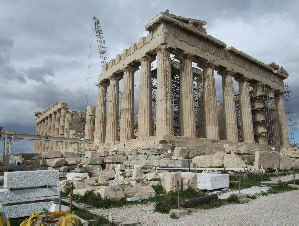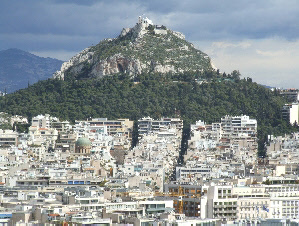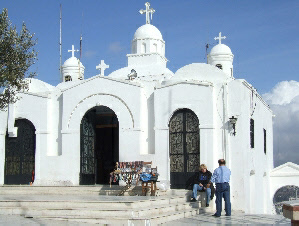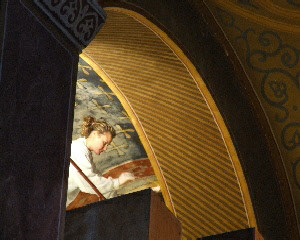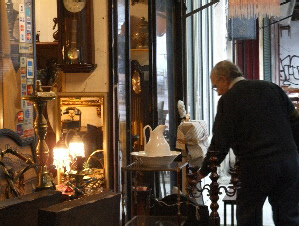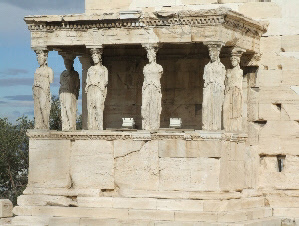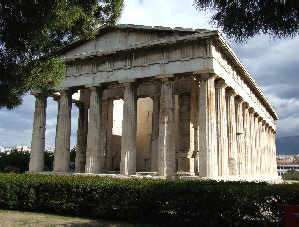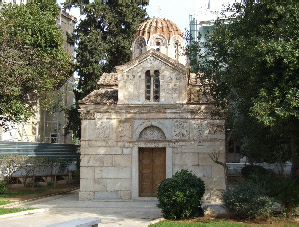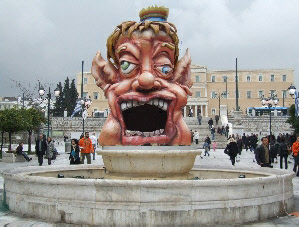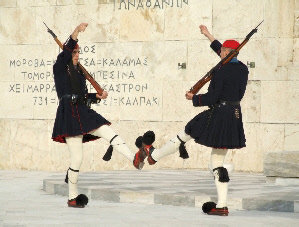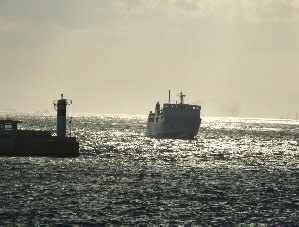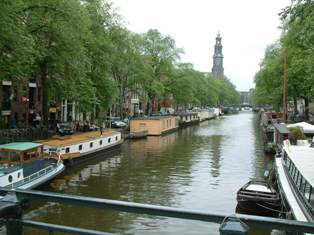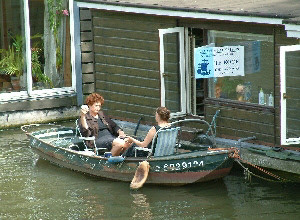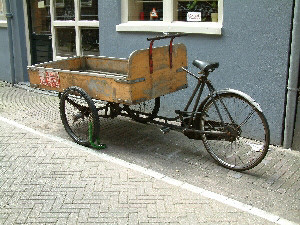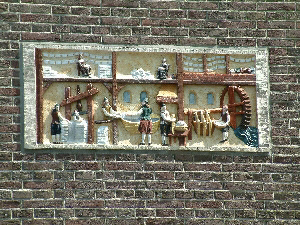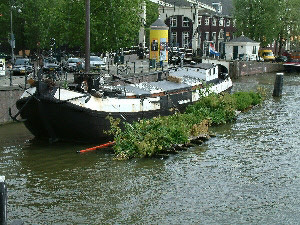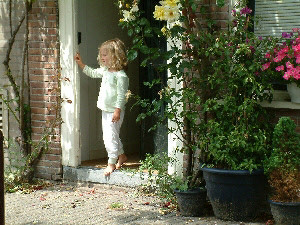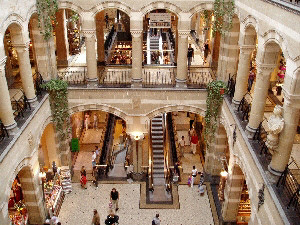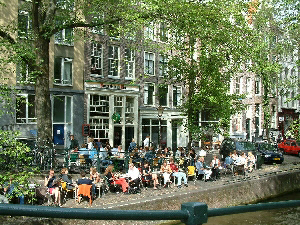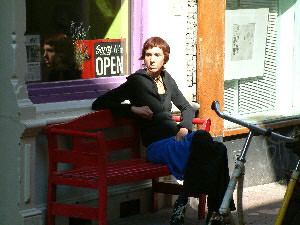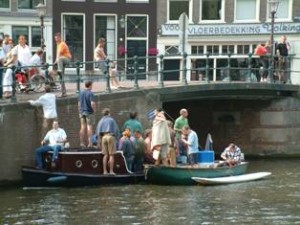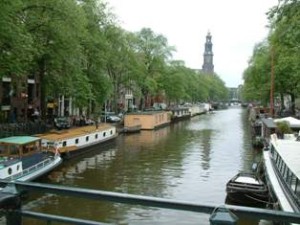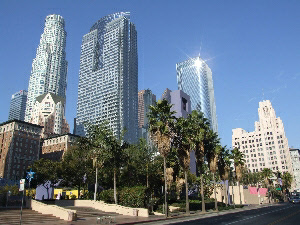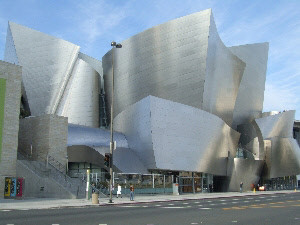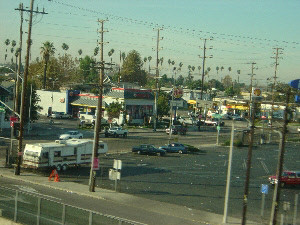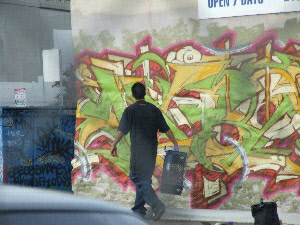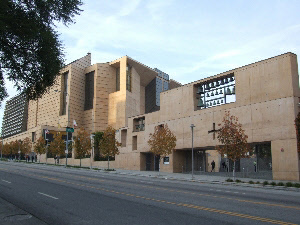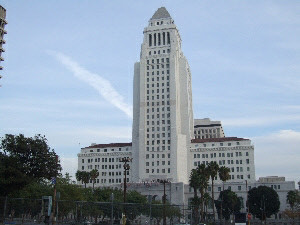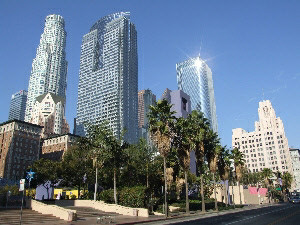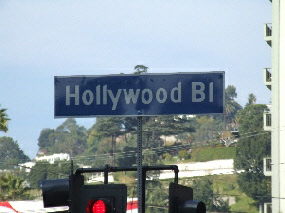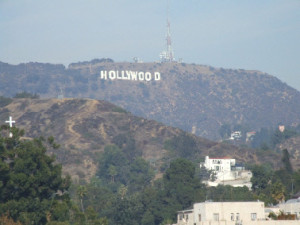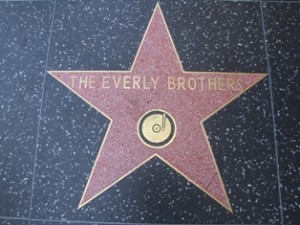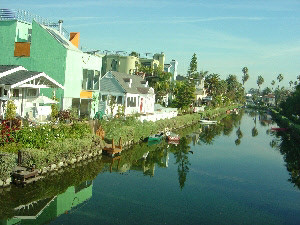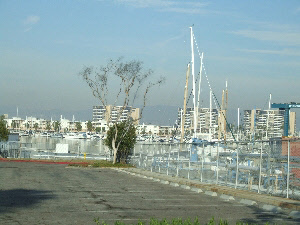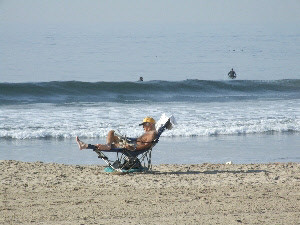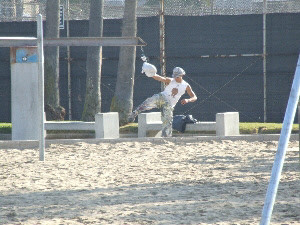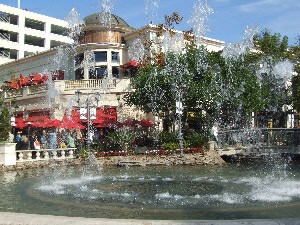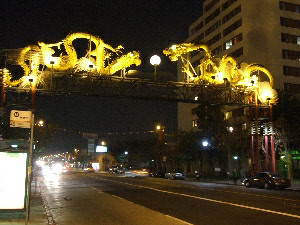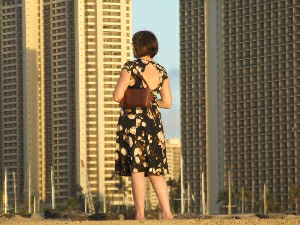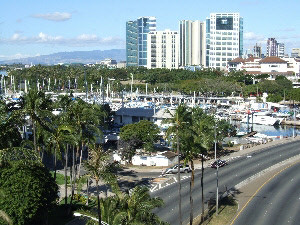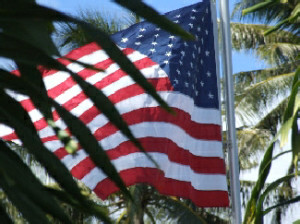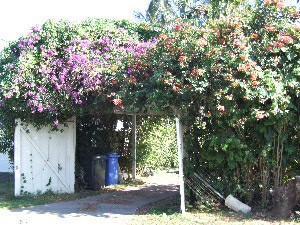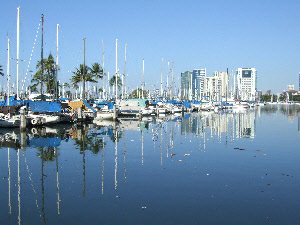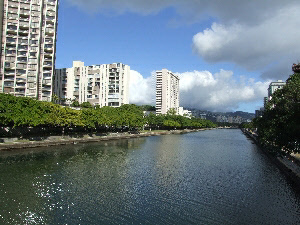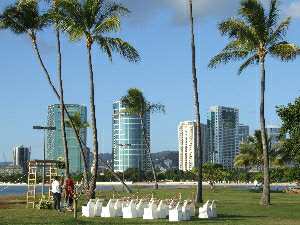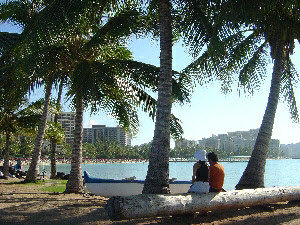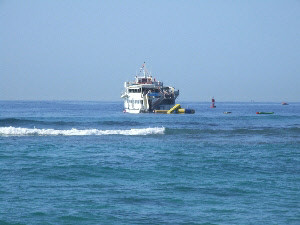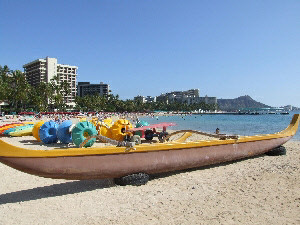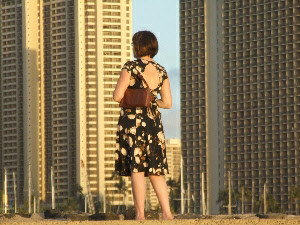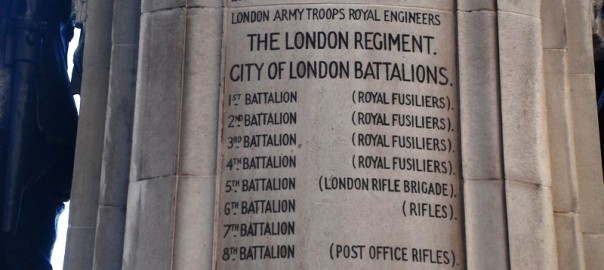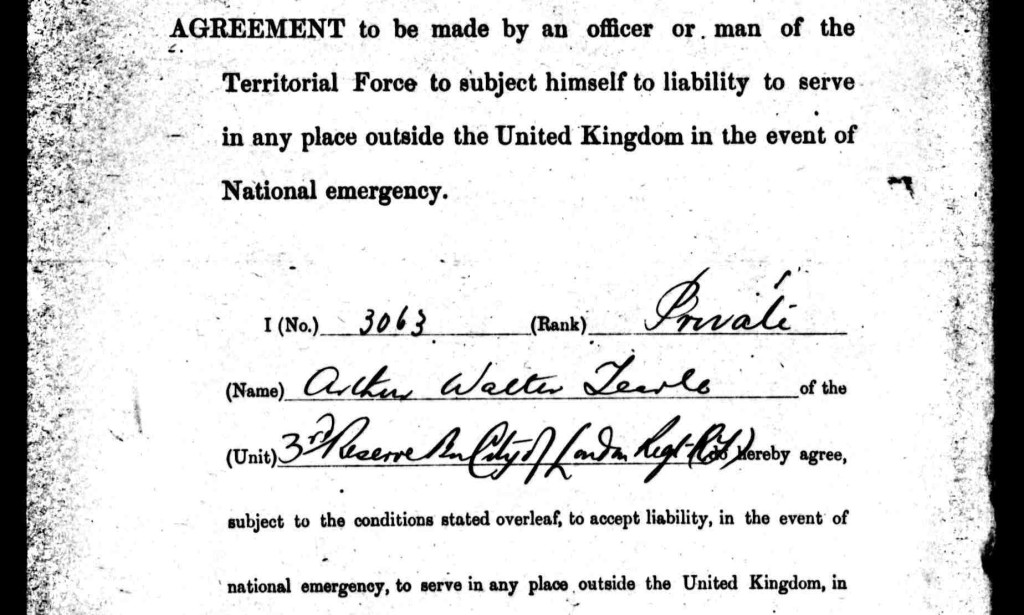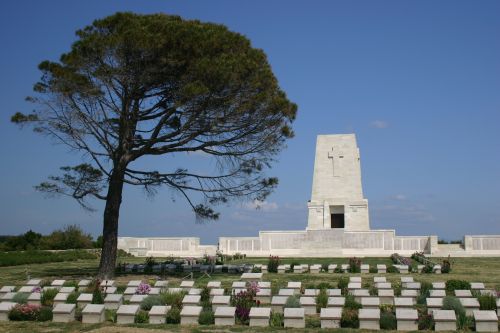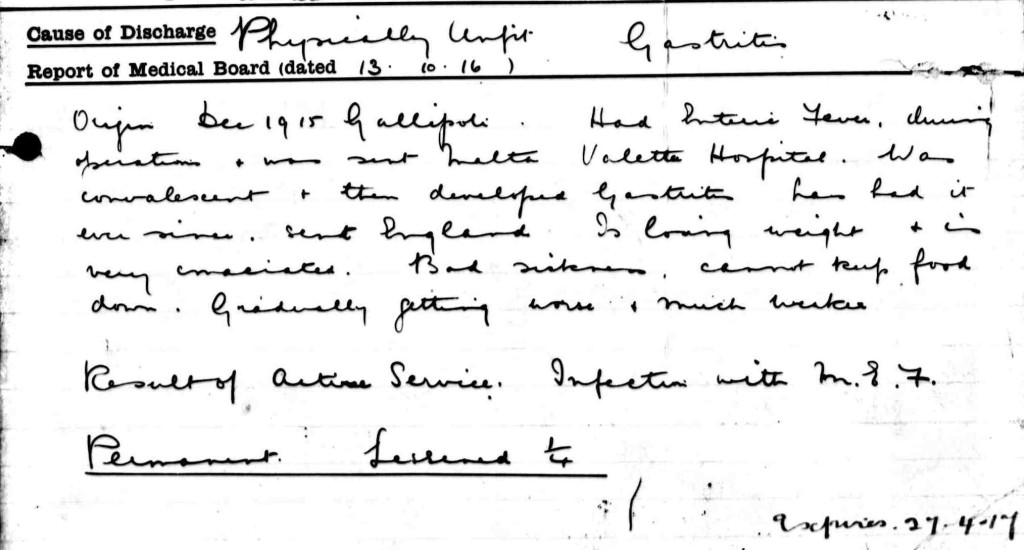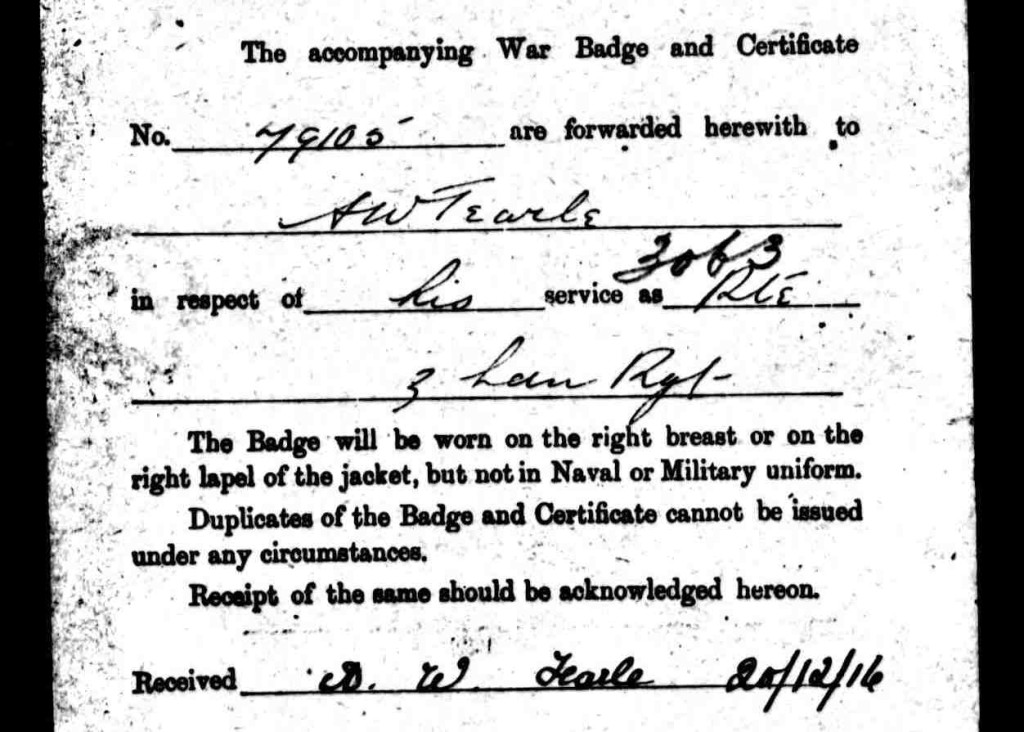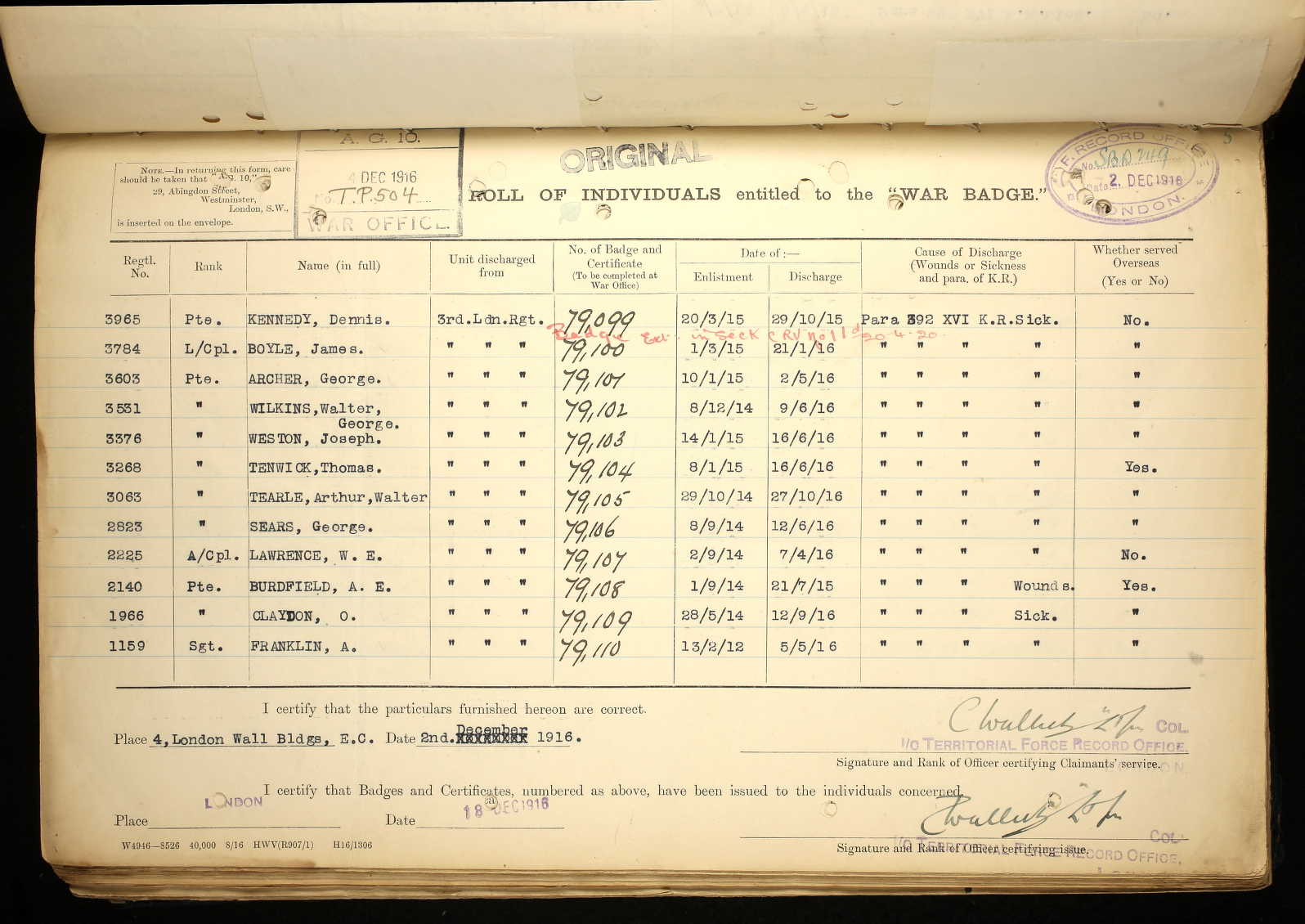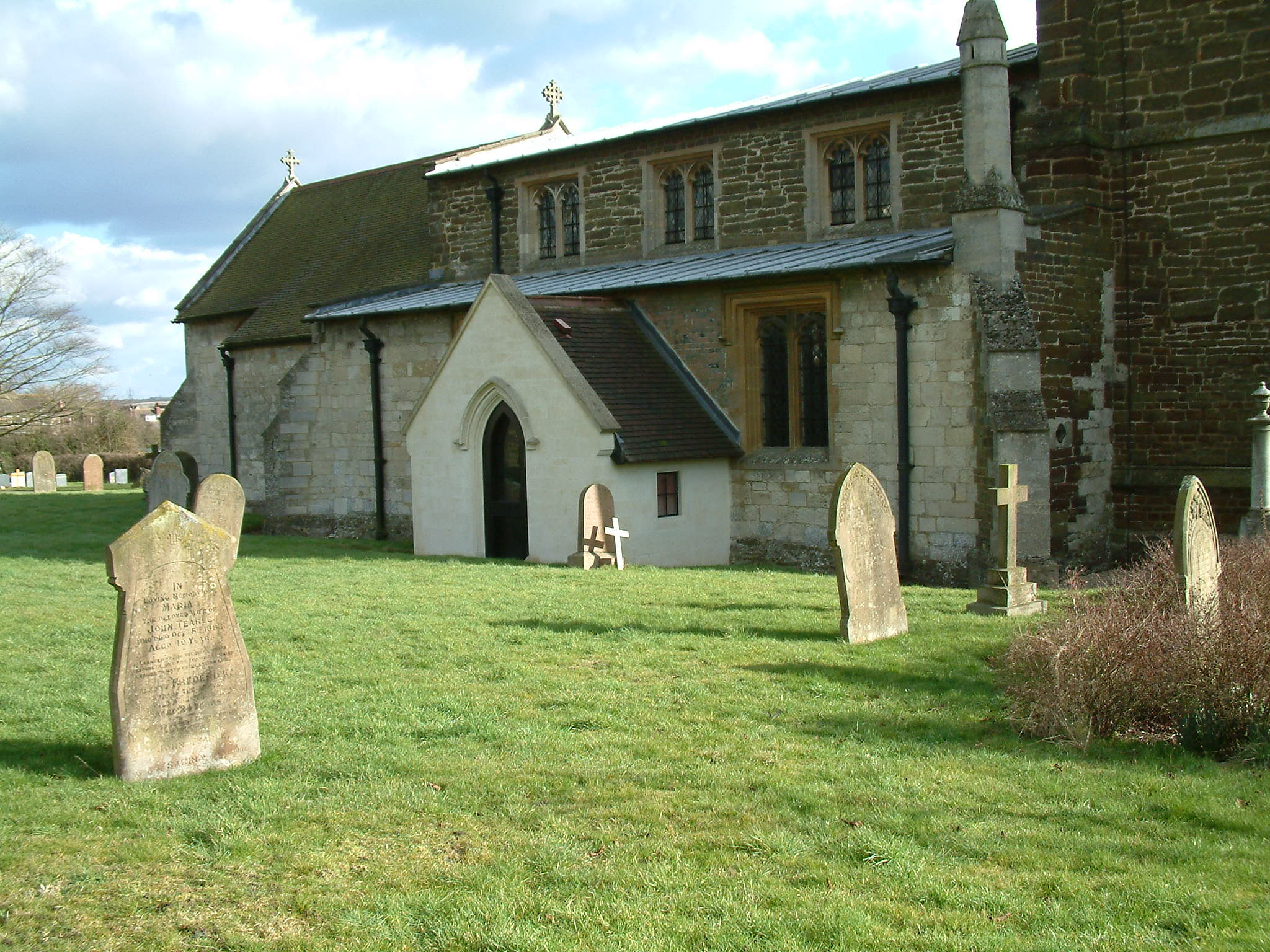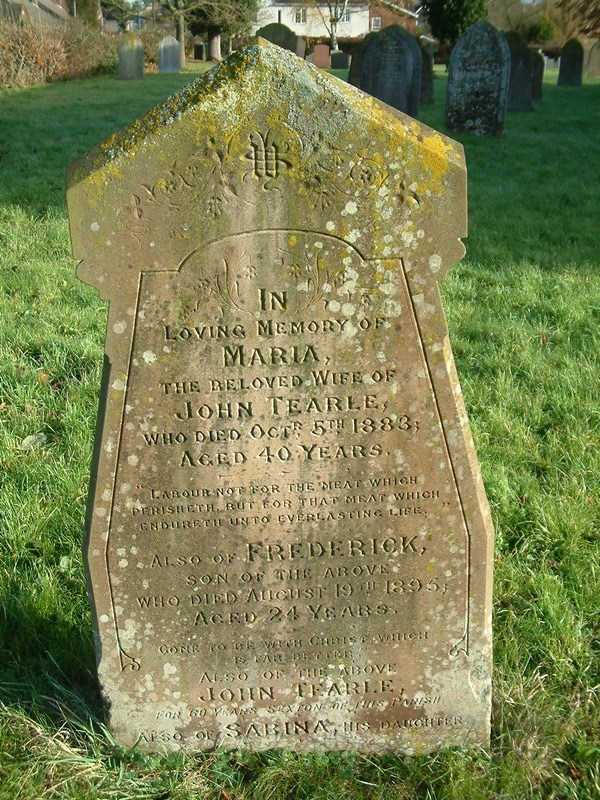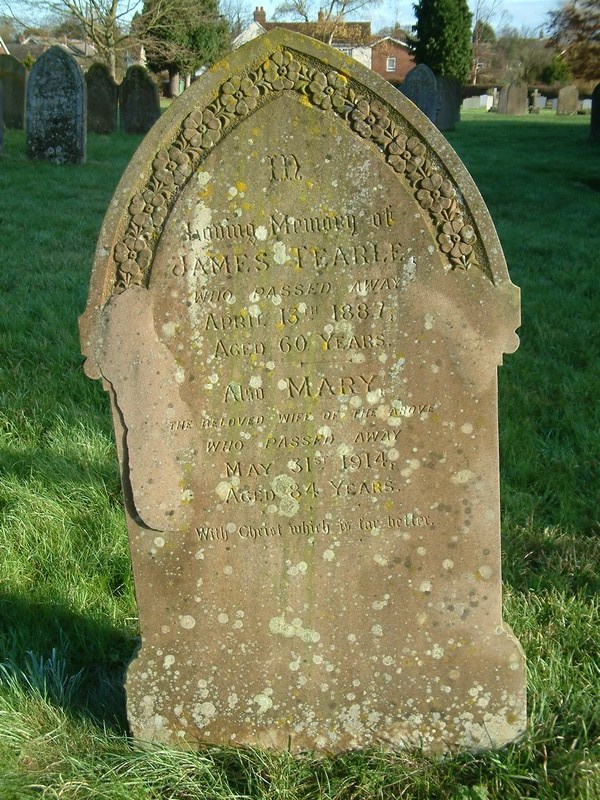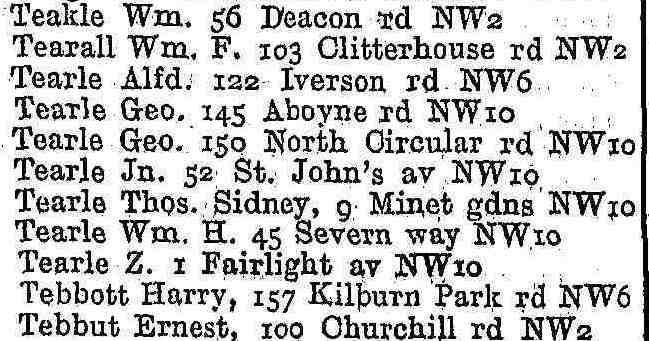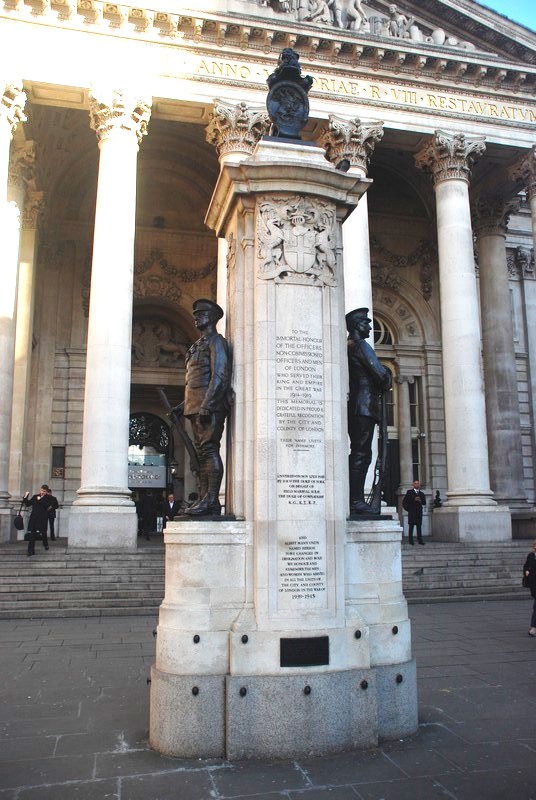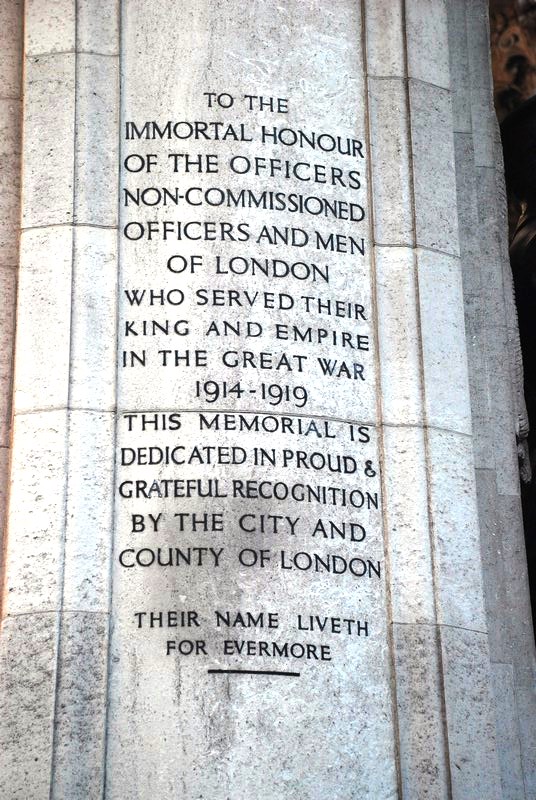All posts by ewart.tearle
Amsterdam in Summer
At night, you can hear the tunes of the bells of Westerkerk, and remark on the clarity and depth of tone of its big bell. It is evocative of Amsterdam’s long history and reminds you that this was once a powerful and wealthy city-state with an empire of its own.
Los Angeles
The Disney Centre is a series of large halls used mostly for exhibition space and conferences. When the building first went up, it was highly polished and stories are that some people in some offices in the city were blinded by the reflected light from the Disney Centre at certain times of the day and certain days of the year. There are a few surfaces with the original polish surviving, but they are out of the sun all year.
Our impression of LA is that it’s mostly a slum. On the way from the airport to the city centre, everything you can see is part of a slum; 250,000 homeless roam the streets of the greater city. In one of the wealthiest cities of the world, they still have overhead wires.
A is probably the graffiti capital of the world. This graffic artist was working with a small gang on a wall near Chinatown, close to the Downtown area. You can see the criss-cross of the chain fence through which I took the photo.
The Cathedral of Los Angeles is worth a visit. It’s unique, not overly self-consciously modernist, and does not participate in the gaudy Spanish Catholic traditions of the people who mostly attend it; inside, the building is austere, minimalist, even. There are no gory statues such as you see in Spain and very little ornamentation. It had a beautiful front yard and cafe, with a quirky garden of olive trees and statues of carp, camels and beehives.
This is Los Angeles’ iconic building, City Hall. You can see graphics in header pages and signposts all over the city, using the pyramid shape at the top of the building to show where Downtown was, or to indicate an official communication from the council or the mayor’s office.
From some views, Los Angeles is a city of wealth, super-modern buildings and wonderful promise. This photo is looking across Pershing Square to Downtown, the centre of the city.
The Downtown newspaper said that 90,000 homeless eke a poor living from the miserable streets of Downtown. They are constantly rummaging in rubbish bins and they take the aluminium cans they find there to recycling machines where they get paid in small coin for each can they shove in. This chap was sorting his belongings in Pershing Square, Downtown, where he could hear the waterfall but exposed himself to the close scrutiny of a street security guard.
Hollywood
I have put two really famous names for you right at the beginning of this section – Hollywood Boulevard and the Hollywood sign in the Hollywood Hills.
The sign itself used to advertise property for sale in Hollywoodland, but the sign fell into disuse and the “land” part of the sign was lost. Our own Alice Cooper became heavily involved in saving the sign and he bought the H and renovated it. The entire sign is now in 40ft high corrugated steel sheets (such as you would use on your roof) and is designated a national monument.
We took a bus tour of Los Angeles because we were only there for two days and LA is a huge, sprawling city that is too spread out to walk around. Part of the bus tour was to Hollywood, so we parked the bus close to Hollywood Bvd and had a quick look around. We saw the Roosevelt Hotel where Marilyn Monroe used to live and was the site of the first Academy Awards in 1911 and we also had a look at the Chinese Theatre. It’s not a theatre at all, it’s a cinema and it’s not Chinese, either, it’s a building that represents what Sid Grauman in 1927 thought a Chinese building should look like. Never mind, it’s pretty spectacular, even a bit over the top. Near it is the Kodak Theatre where the Academy Awards will be held for the next 50 years or so. I thought the whole street was a bit unkempt and down at heel so I asked why; in the 1980s, due to horrible bad management, Hollywood went bankrupt and I think it still is.
There are more than 2000 five-pointed stars like this in the footpath along both sides of Hollywood Bvd, all the way down to Vine St. Remember the Elvis song about a cop breaking his little bottle of Love Potion Number 9? This is where it happened… The locals call this strip the Walk of Fame. I grew up with the Everly Brothers being played on the radio when I was at primary school, so that’s why I captured their star. The symbol of a record player indicates they received their award for music. The Walk honours celebrities who have been nominated by the Hollywood Chamber of Commerce. They are not necessarily movie stars – Donald Trump is there – but they are all active in the entertainment industry. The person nominated has to pay $15000 towards the costs of the star and its installation, but usually the fee is actually paid by the nominee’s fan club, movie producer, TV network or recording studio.
I looked for the impersonators along Hollywood Bvd and there were plenty of them – a Michael Jackson, a Jimi Hendrix, a Darth Vader, Kiss, and this petulant Fat Elvis.
LA Tour by minibus
The little house in the left middle ground on the canal in Venice, LA, is owned and let by Julia Roberts. The driver said, “The stars are everywhere. If you meet a celebrity, greet them like a normal person, because they are just normal people like you and me, and they will be quite pleased for you to take their photograph and ask for their autograph.” I didn’t get to test his advice, because I didn’t see a celeb anywhere.
The name Los Angeles refers to a whole district, as well as a single city. Within the district there are several large self-contained cities, like Hollywood, and here. This is the Marina Del Ray, of the city of Del Ray. This is the only photograph I had to take from inside the bus. There are thousands of boats here, many on land for seasonal repairs.
This is Venice Beach, the Baywatch set. Of course, there are no red bikini-clad life savers, because the guards already save enough lives without the distraction of pseudo-drowners trying to get some female attention. It seems the life-savers are necessary because the water is surprisingly cold. Those who swim without a wetsuit can suddenly find themselves shivering uncontrollably and therefore unable to swim. In summer, there are up to 600 rescues a week.
There is a 100m strip of Venice beach that for some reason attracts the athletes, or perhaps men who like to show off their naked upper bodies, to people who like to look at that sort of thing. Anyway, this length of sand is called Muscle Beach. Perhaps because it was New Years Eve the place was almost deserted, but the only action I could find apart from the handball and an indolent game of basketball was this chap carefully, slowly and rhythmically practising his kickboxing moves.
The minibus driver insisted on taking us to Farmers Market. I couldn’t tell you where in LA it was, and when we got there I wasn’t too impressed with it. A lot of people mulling over a lot of stuff you wouldn’t take home. We found some nachos and cheese for lunch and strolled along an ex-tramway street. At the end was this nice little spot – The Grove. A hump-backed bridge spanned a pond in the middle of which was this fountain, playing with a musical background. You can see the water shoots suspended in mid-air on one of the more active chords of the piece.
It’s always an adventure to go to Chinatown, even though most of them are like all the others. This one in LA had a vociferous jewellery centre that caught Elaine’s attention as the bamboo sellers jostled with the little food bars. The nice thing about all Chinatowns is that the traffic always has to go slowly and make its way carefully amongst the crowds who mill along the footpaths and casually cross the narrow streets. Both of us admired this magnificent gate to the quarter. It was only a short walk from our hotel in the Downtown area, and in a city where walking is difficult because of the distances, this was really pleasant. It was also the end of the mini-bus tour.
A wedding in Hawaii
Hawaii is a tropical island in the middle of the Pacific, north of the Equator. We went there just in time for Christmas. Winter in London, summer in Honolulu – not a bad choice. The picture on the right is the view of Honolulu from our hotel, the Polo, 9th floor. We could wear t-shirts and sandals and of course the rain is warm.
What you notice particularly about Hawaii is the quality of the light. Look at how clear the buildings are, how vibrant the colours. This is not paradise because the people are wealthy, they’re not; this is paradise because the sun shines brightly, the sea is deeply blue and the evenings are fragrantly warm.
Honolulu is on O’ahu, which is in the middle of the island group, and it’s all very American. Near our Christmas dinner house, this huge Old Glory waved in the front yard of a near neighbour and another had a small flag growing with his pot plants as part of his letterbox, as you can see in the photo below. We sun-bathed on low recliners, wore sun-glasses and ate ice-cream.
O’ahu is an island full of flowers – beautiful, big showy hibiscus like the one you can see right, with bright bougainvillaea and a huge variety of orchids. The wonderful display you can see on the latticework around the front gate of another neighbour in the picture, below, was quite common. A cheery little native dove cooed in a unique singsong and picked titbits from the cracks in the footpath. Colourful birds I had never seen before sang songs I had never heard before.
Look at the colours in this picture – aren’t they terrific? The clarity and brightness are remarkable. This is the marina close to our hotel. The funny thing is that we humans take ourselves with us wherever we go. Look at the rubbish on the surface of the water. Who would do that in paradise? You moor your million-dollar yacht on a silent, silver pond, admire the view – and then chuck your junk overboard. It did not smell nearly as lovely as it looked.
Some of the views in Honolulu are just stunning. An offshoot of the marina is this canal development. I am standing on a low bridge just a couple of hundred metres from our hotel and this canal, fish and all, stretches away almost to the foothills. I’m not sure how the water is circulated, but this is a sea-water canal.
There’s a shallow sea-water pond in the middle of Magic Island and I watched a young boy catch a small fish and yell excitedly to his dad to help him land it. This heron may have been watching him, or it may have been waiting for a fish of its own. Two young hunters hard at work…
The main reason for going to Hawaii was for the wedding of very good friends. This wedding was to take place at dusk on Magic Island, Hawaii. It’s not an island at all, it’s a spit of land with a park, a pond and a banyon tree. Fortunately for us, it was close to our hotel. Close enough so that Elaine was emboldened to think she could walk there in her silver sandals and glittering ball dress. The hotel staff commented to us the following day that they watched her walk all the way there and thought she was very brave!
You can see here just how lovely the location was for a wedding; palm trees, a gentle, warm breeze, the rolling surf and excellent company.
Honolulu is, of course, a modern, multicultural city. Read Hawaii, by James Mitchner, to get a flavour of the sometimes turbulent history of the natives, the Chinese, the Japanese and the Americans. We took a short trip around the bays in the south of O’ahu and saw some of the shanty villages the natives live in. These conditions point to the probability that the wealth being generated by Honolulu and Waikiki is not doing a lot for the local economy. Most of the money must be being repatriated to the mainland. Pity. This little shrine was outside a restaurant.
This is the essence of paradise, isn’t it? A young chap sits on a log next to his girlfriend, and they sit and look at a warm, sunlit, idyllic scene. They are looking across the Magic Island pond to Waikiki.
Every day, this ship quietly and slowly sidles up to this spot and drops anchor. It lets down huge orange pillows and people climb down off the ship and go swimming, fishing and surfing. I’ve never seen anything like it.
Hawaii is a wonderful place to have a wedding. This couple and their chaperone (?) were married at the Hilton Hawaii Village, a 2000-bed hotel. One of five similar hotels in Waikiki. On the Magic Island foreshore that faces Waikiki (so there is a nice background in every photo) we saw four weddings taking place at the same time.
These are the racing catamarans of Waikiki, drawn up on the beach. There is quite a culture of sport amongst the young in Waikiki. The catamarans are paddled by a crew of 5 – very quickly – even though the canoes are quite heavy for the crew to lift out of the water.
I think this is one of the best photos I have taken. On the evening before the wedding we walked to Waikiki and waited for the sun to set. Elaine was watching the effect of the light on the Waikiki hotels and enjoying the warm atmosphere. Behind her to her left there was a dreadlocked chap in a wheelchair playing an electric guitar to background music from his ghetto-blaster. He was good, too
The Top of the Tearle Tree
I have been working on the difficult task of drafting a chart that shows the Tearle family tree from its beginnings in Stanbridge, to the middle of the eighteenth century. The sole criterion was that the line of Tearles it described had to be unbroken, from the first name to the last. Barbara Tearle of Oxford started the project off by posing a scenario that was solidly rooted in fact, but sounded like the start of novel:
Jan 2006:
“In 1610 John Tearle, yeoman of Stanbridge, bought land in Stanbridge. He could have been making this purchase near the beginning of his farming career, or more likely near the end. He could have been anywhere in age between 25 or 50. He could have had a young family or a grown family.
There is a marriage of John Tearle to Joan Hale in Upper Gravenhurst in 1607. The Stanbridge PRs show baptisms of children to John Tearle from 1611 to 1618, but they are incomplete for the next few years.
In 1653 John Tearle yeoman of Tilsworth (wife Joan) settled the same land on his son Thomas and his new wife Mary Smallbone. Also involved was William Tearle of Stanbridge and there is a reference to a John Tearle of Stanbridge who may be a different person from John of Tilsworth.
Is the newlywed Thomas Tearle son of John bap 1618? If so, he would have been 35 when he married. Rather late, but they were troublesome times and people might have put off marriage.
In 1699 Thomas Tearle of Stanbridge transferred the land to Thomas Tearle jr. of Hockliffe and John Tearle of Stanbridge. If this is the same Thomas who married in 1653 he would have been 81. Is this likely or is there another generation? One of the witnesses was William Greenhough who then grants a mortgage to Thomas Tearle sr. and jr.
Using William Greenhough as a point of reference, Thomas Tearle who transferred the land, is the testator of 1699 who died in 1704. As the testator’s sons were Thomas and Joseph, the John Tearle mentioned in the transfer is probably from a different family. He may be the John Tearle who made his will in 1701, who is from a different family because he only mentions one brother (Thomas) and different sisters and brothers-in-law.
In 1717 Thomas the new landholder of 1699 and his brother Joseph remortgaged to Elizabeth Haines. This may confirm the identification of the two Thomases as the testator of 1699 and his son.
In 1732 Joseph Tearle dies and his son Thomas administers his property. The various mortgagings until the sale of the land in 1788 show that this Thomas was married to Mary and that his son was Joseph who was married to Phebe Capp.”
I mulled this over for a long time and slowly gathered the documents together that would allow me to draw my chart. Barbara had provided me with an outline, but I needed much more. The only documents extant from the period are the parish records of Stanbridge Church, (hereinafter referred to as the PRs) the wills left by some of the men Barbara had mentioned, and some land transfer documents that mentioned Tearle owners or neighbours. All of these documents are held by BLARS, the Bedfordshire history centre in Bedford, and each is numbered. I shall be quoting those numbers throughout this account. There is also an excellent book on the subject of Tearle history called TEARLE, a Bedfordshire Surname, written by John L Tearle. I shall refer to his book as JLT, plus relevant page numbers. Since most people who own the book have the 2nd Edition, then that is the one the page numbering refers to.
There is also a convention I use that gives a man’s name and birthdate as a short code, such that a Thomas Tearle born in 1709 will be referred to as Thomas 1709, if he marries then he and his wife will be referred to as Thomas 1709 and Mary, nee, her maiden surname. If there are various people from different places, then their place name will also form part of their identifier. So this man would be Thomas 1709 of Stanbridge, or shortened to Thomas 1709 Stbg, and he and his wife will be referred to as Thomas 1709 Stbg and Mary nee Sibley. I have not seen this convention before; I had to develop it to give a unique but plain English identifier to the people who will be mentioned in this chart. I shall be using the convention here.
To return to Barbara’s outline, then, I found the baptisms of children of John 1610 and Joan nee Hale in the Stanbridge PRs:
1611, February 28, Elizabeth, daughter of John Tearle.
1614, July 22, Susannah, daughter of John Tearle
1618, September 20, Thomas, son of John TARLE
If we now look at JLT pp67-69, the author asserts that these are the children of John 1585 and on p68 he states that we should look for a son John who was born in 1610 (ie be the firstborn) who would inherit the property coming down from his father. There is plenty of time between the marriage in 1607 and Elizabeth’s birth in 1611, for a firstborn son, John. If the man buying land, above, is indeed John 1585, then in 1653 his son John 1610 is settling the land he inherited onto his son Thomas who had just married Mary Smallbone. This means that BOTH John 1685 and John 1610 married a Joan.
It also means that John 1610 is a grandson of John 1560. It further means that John 1585 is alive in 1653 (he’d be 68, not impossible) or there must be a will or land transfer document missing that transfers the land to John 1610.
I have checked the BLARS documents that Barbara referred to in other correspondance (for example GA 499) and the question Barbara posed above with regards to John who died and left a will in 1701 was answered just a little later – this John is the son (1654) of Thomas and Mary nee Smallbone.
William Greenhough is probably the one who married Alice 1682, the daughter of Thomas 1655 (the elder) of the 1704 will.
There are four men mentioned in GA 501 who are quite similar to the names in the Poll Books of 1695 –
William Tearle of Stanbridge
John Tearle of Stanbridge
John Tearle of Stanbridge, son of Thomas (John 1653-1701)
Thomas Tearle of Stanbridge (Thomas 1632)
In this list “John Tearle of Stanbridge, son of Thomas” is surely the son of “Thomas Tearle of Stanbridge”, so there should be a Thomas, son of John
Thomas 1655 who died in 1704 had a wife Mary, but she certainly was not Mary nee Chynn. I have checked the online (Ancestry.co.uk) trees and Mary Chynn is universally noted as marrying on 24 July 1660. This was the date Thomas 1632 married Mary Quinney. No-one quotes the actual record, just points to the Ancestry tree where it is stated that Mary Chynn married Thomas 1655. I have deleted the surname from this Mary in our Tree.
Disagreements and inconsistancies:
If (JLT p102) John 1667 is the author of the 1701 will, then Thomas his brother is Thomas 1674 (who married Sarah Pepyat) of the 1720 will.
However
Barbara says the author of this will is John 1654, the son of Thomas 1632 and Mary nee Smallbone. So that means that there is another generation and the wife of William Greenhough is Alice 1620, the daughter of John 1654. Also, we have a timeline for John 1667 from the Stanbridge PRs:
Baptism
1667, October 2, John son of John Tearle
Burial
1699, May 8, John Tearle
So I think that Barbara is correct.
On p102, John L has a tree starting with John 1610 and another starting with John 1620 (which goes back to John 1560 on p92) but he does not assert that this is the John 1610 he was keeping an eye out for on p68. What if this is that John? What if this man was the John Tearle whom Barbara introduced who was buying land, or possibly increasing his holdings, in Stanbridge, for his brand new son, John 1610, and future children, now that he was married?
Both William 1620 and John 1620 are placed on the Tree as possible sons of John 1585, but if we place John 1610 as the elder brother of Elizabeth 1611, and both as children of John 1585, then detach John 1620, it might make the above story much less complicated. It certainly is not an impossible scenario, since in Stanbridge in 1704 Joseph and Alice nee Hyde are christening their daughter Mary and in 1701 and 1706 Thomas and Sarah nee Pepyat are christening their new children; this is a clear sign of these two families living and working in the same village at the same time.
Here is the story as I now see it.
GA 500: in 1607 John Tearle marries Joan Hale and in 1610 he buys a parcel of land in Stanbridge from Alice Iremonger more or less coinciding with the birth of his first son, John 1610. There is no record of how John raised the £310 to buy the land. This man is John 1568, son of John 1560. John 1610 as his son is postulated by JLT p68.
During his life he wills the parcel to his son John 1610 and subsequently dies. This is probably the only way the parcel could pass to John 1610 (unless there is a land transfer document missing) because John 1610 was too young to buy the property from Alice Iremonger himself.
GA 501: in 1653, John 1610 sets up a trust with William 1620, his brother, and John 1620 of Stanbridge who is a neighbouring landholder, to hold the land until both he and his wife Joan are deceased, then to pass it to Thomas 1632 and Mary nee Smallbone.
Barbara notes the four adult male Tearles of 1653: John 1610 of Tilsworth, Thomas 1632 his son, William 1620 his brother and John 1620 of unknown parentage, but who must be closely related or he would not be so trusted.
Again, the land in GA 501 must have been willed to the next owner, because in 1699:
GA 502: Thomas 1655 is transferring the parcel to his son Thomas 1678. The John Tearle mentioned is his brother John 1653 (of the 1701 will) and William Greenhough is the husband of Alice 1682, the sister of Thomas 1678 ie Jnr.
GA 503: father and uncle assure the right of the property to Thomas 1678
GA 504: The property is mortgaged to Williamm Greenhough, but through Alice, it is still in the family…
Then in 1717
GA 505: The will of 1704 by Thomas 1655 gives the land to Joseph 1676 (and Alice nee Hyde) on production of a male heir, and so it passes to his son, Thomas 1709, via GA 507, 508 and 509.
1742
GA 513, the property is held by Joseph 1737 and Phoebe nee Capp, as well as Mary nee Sibley, Joseph’s mother, wife of Thomas 1709.
1778
GA 515 to GA 521 the property is sold off and Mary dies a “pauper” – in other words, she is on parish relief, as per the Stanbridge PRs:
Burial
1792, March 15, Mary Tearle, widow, pauper.
I have cross-referenced a couple of things to see if I am consistent and compared GA 502 (1699) with the Poll Book of 1695:
GA 502:
1. Thomas Snr
2. Thomas Jnr, of Hockliffe
3. John T
Poll Book:
4. William T
5. John T
6. John, son of Thomas
7. Thomas
Who are these men?
1.Thomas 1655
2. Thomas 1678
3. John 1653 (of the 1701 will) brother and uncle to 1. and 2. respectively.
4. William 1656, brother of John 1653 and Thomas 1655; but might also be William 1649, or even William 1670.
5. John – poss John 1667.
6. John 1653 (of the 1701 will) the only John, son of a Thomas alive at that time.
7. Thomas – this is not John’s father Thomas 1632, otherwise the land would still be in trust. It is Thomas 1655 because he still held the land and thus probably got the vote. It is likely that Thomas 1678 did not at that time hold the land, so he may not have qualified.
I have not turned the world on its head with this view of the top of the tree, I just think it looks more likely that John 1560 begat John 1585 who begat John 1610 and so on down to us. That still leaves John 1620 in a tree of his own, along with Thomas 1674 and Sarah nee Papyat in a tree that grows parallel to ours and within which lives the charismatic Nathaniel, so I have called this nearby tree Nathaniel’s Tree. I was hoping that the view I had would amalgamate the two trees, but John 1610 and John 1620 cannot belong to the same parents and there is no grandfather for John 1620 to provide an ancestor who would unite the two trees. I notice that on page 102, JLT has them on separate trees, so that would appear to be the natural order of things.
The essence is that if John 1610, as the first of the children of John 1585, is more likely than John 1620 being the last of them, then our Tree starts with John 1560, not John 1610, and Nathaniel’s tree starts with this John 1620.
GA499 onwards give us the proof, which is that John 1610 is the first recipient of the parcel that was bought in 1563, so it follows that he was not the original purchaser, which then has to be his father, John 1585. The rest – from John 1610 all the way to Thomas and Mary nee Sibley, simply follows.
So our Tree is:
John 1560
John 1585 and Joan nee Hale
John 1610 and Joan
Thomas 1632 and Mary nee Smallbone
Thomas 1655 and Mary
Joseph 1676 and Alice nee Hyde
Thomas 1710 and Mary nee Sibley
and from the link below you can download the pdf of the chart of the descendants of John 1560 to the children of Thomas 1710 and Mary nee Sibley. This is the Top of the Tearle Tree and you are welcome to download it, print it, paste it up and frame it on the wall of your living room. It is from here that we trace our ancestry and it is from this village in central Bedfordshire that we made our way into many countries all over the planet. But even today, there are more Tearles in the countryside around Leighton Buzzard, Luton and Dunstable than anywhere else in the word. We are essentially a Bedfordshire, and indeed a Stanbridge family of rural folk who have worked the land as tenant farmers, and occasionally owners, until the last Tearle who lived in Stanbridge died in a cottage on the corner of Peddars Lane in 1956.
Reference:
Tearle, John L: Tearle a Bedfordshire surname, Lillydown House, 1996
Tearle, Arthur Walter, 1881, St Pancras, London
Ethel had deep concerns when Arthur told her he was going to join the army and fight in the war that was raging across Europe in 1914.
“You’re nearly 35 years old, why do they need you?” She had read the newspapers and had become increasingly alarmed at the lists of casualties being published every day. “You’ve got three children, do you just waltz off and leave me to look after them by myself? If you are killed who then cares?”
She knew she was repeating what every mother had said to their sons, but she was sure this was different – Arthur wasn’t a fit young man looking for adventure, he was working for a well-established educational publisher and he had a family to care for. Not to mention Ethel herself. She had not married him in the Prince of Wales Rd Wesleyan chapel in 1898 to see him disappear in 1914, killed in action in some muddy hell-hole in France or Belgium. Her sister Edith had been her bridesmaid, Arthur’s own sister Minnie had signed the register, surely they would not approve of this? She did not have time to consult them; on the 29th Oct 1914, Arthur showed her a copy of the form he had signed in the Edward St Recruitment Office not far from where they lived.
“I’m in the Territorials,” he said. “Mind you, it’s only a reservist battalion.” He looked at her hopefully, waiting for approval.
“3rd Reserve Battalion (City of London) The London Regiment” she read out. “We’re not in the City. Why them?”
“They recruit over here. And besides, we were married in St Pancras, remember? That’s where the HQ is.” His chin went up, “I’m in the Royal Fusiliers.”
“Reservist, eh? Listen to this.”
She read out a short note from the form
“… to subject himself to liability to serve in any place outside the United Kingdom in the event of National emergency.”
“What do you think the War is? It’s a National emergency. The minute they get hold of you, you’ll be outside the United Kingdom all right!”
Why could he not see this?
She looked up from the form and saw disappointment, and even an echo of her own exasperation, on his face.
“I know you’re doing the right thing,” she said slowly, “but this is going to be hard for us. You, me and the children. When do you start?”
“Tomorrow morning.
The 3rd (City of London) Battalion, The London Regiment. (The Royal Fusiliers)
Enlistment numbers show the stark reality of the sheer quantity of men enlisting for what we now call World War 1, and which our parents referred to as The Great War. The 3rd Battalion enrollment numbers rocketed from 1947, the enrollment number of the man who enlisted on 3 May 1914 to 3148, being the enrollment number of a man who enlisted on 18 Dec 1914. A total of 1201 men for one battalion in just seven months. After 1916 many regiments and battalions were disbanded and re-organised and the numbering system became chaotic and non-sequential, but during the months above, the numbers are orderly and sequential. The Long, Long Trail has a section on the London Regiment, and the 3rd Battalion, that gives further background into the regiment that Arthur had just joined
The Long, Long Trail notes that the 3rd Division of each regiment consisted mainly of Section D Reservists, who were normally soldiers who had fulfilled their 5 years service in the regular army and were waiting out their 5 years on reserve.
“All those surplus to the immediate needs of the regular army battalions were posted to the Special Reserve. Thus the (usually) 3rd Battalion of each regiment was massively and very rapidly expanded. Very large numbers of men passed through the SR battalions before being posted to the regular units.”
The record is silent as to where Arthur was trained (most of the London Regiment was trained on Hampstead Heath) but it is quite specific that he was “Home,” as the army calls it, in basic training, from 29 Oct 1914 to 22 Dec; just 55 days. On the 23rd Dec he was on a ship, bound for Malta and the Egypt Theatre of War.
“Reservist?” A shocked Ethel mourned the fact that Arthur could not have Christmas with his family.
Gallipoli
Malta was not under direct threat in 1914 and 1915, but it was a strategic post in the Mediterranean and housed hospitals for repatriating the wounded as well as supply depots for onwards goods and munitions deployment. Whatever he was doing in Malta, and the record is also silent on this, Arthur worked, or trained, perhaps, for 106 days until, on the 7th Apr 1915, he was posted to the Mediterranean Expeditionary Force (MEF), to fight in the Dardanelles Campaign. This engagement now forms part of the history of both the London Regiment and the ANZACs. Gallipoli is where New Zealand became a nation and ties with Australia were permanently bound. The 25th April each year is a National Day for both countries.
Vice-Admiral Sir John De Roebecks describes the landings at Anzac Cove and Cape Helles on 25 Apr 1915. Since this was an amphibious landing, I assume that Arthur spent the time between 8 April and 25 April in training for the assault on the Gallipoli beaches. The Vice-Admiral does not specifically mention the 3rd Division but he does say the 2nd Division (Royal Fusiliers) embarked on the warship the Implacable and landed at 07:00 with no casualties, the accompanying warships having given excellent covering fire.
“The nature of the beach was very favourable for the covering fire from ships, but the manner in which this landing was carried out might well serve as a model,” said the Admiral. I think that Arthur was amongst these men. The rest of the Gallipoli campaign is well covered by the many histories written about it and The Long, Long Trail has a very balanced view of the conflict over the entire peninsula.
It is worthy to note that John Henry Tearle 1887 of Hatfield (Service number: 9054) was also there. He was killed on 29 June 1915 and is memorialised on the Hellespont Memorial. I assume he was killed in the Helles area, so he probably survived the original landings and was killed in the Battle of Gully Ravine, which began on 28 June 1915. I shall explain the relationship between John Henry and Arthur later.
Conditions in Gallipoli were appalling. Fighting was almost hand-to-hand and the bodies could not be buried, food was scarce and munitions poorly serviced. Death, disease and sickness were rampant, yet there are legends of donkeys carrying the dead being allowed free pass through enemy lines, of truce hours when the dead were buried and soldiers took the opportunity to swap food parcels with the enemy – for instance, tomatoes were swapped for potatoes. They were fierce fighters, but there was a time and a place for fighting and when there was a truce, then you did not fight.
For almost an entire year the two sides fought over hills and rocky outcrops, trying to force an advantage. Finally, Churchill realised this was no back door into Germany and more pressing concerns drove his attention elsewhere. Gallipoli was the worst disaster of WW1.
Gallipoli was also nation-building for the Turks. Their now legendary leader, Attaturk, built his nation firmly on temporal lines; there would be no blurring of church and state. In 1934 he built a memorial to the events of the Dardanelles Campaign and he made the following promise:
“Those heroes that shed their blood and lost their lives…. You are now lying in the soil of a friendly country. Therefore rest in peace. There is no difference between the Johnnies and the Mehmets to us where they lie side by side here in this country of ours…. You the mothers who sent their sons from far away countries wipe away your tears; your sons are now lying in our bosom and are in peace. After having lost their lives on this land they have become our sons as well.”
Thousands of Kiwis and Australians who visit ANZAC sites every year in honour of their grandparents take heart from this message.
In Dec 1915, Arthur was struck with typhus. He was looking forward to the evacuation, which had been ordered on 8 Dec 1915, but this was a bitter blow after the months of fighting he had endured. The Long, Long Trail concludes that 260,000 Allied troops were killed, and 300,000 Turks. They had fought themselves to a draw.
Arthur was evacuated to Valletta Hospital in Malta, where he started his convalescence after his initial treatment for typhus. He looked at the stone walls and the high, vaulted ceilings from his cot and saw a surgeon with a small group of on-lookers standing around the soldier’s bed next to him.
The surgeon was wearing a bloody apron, his badge of office since the days of the barber-surgeon, and he dropped the chart he was reading onto the soldier’s bed and turned to Arthur.
“This man contracted typhus in Gallipoli and has done well to come through it as far as he has,” said the surgeon to the little throng, grouped around the bed, one in a seried rank of beds, crushed into the long, narrow room. He turned his back to the window, the better to read Arthur’s chart in the gloom. “However, he has now developed gastritis and this will prolong his treatment, mostly with a change of diet. Gastritis is a common complaint after a serious trauma such as Enteric Fever.” The surgeon used the army term to ensure his students were up to date with the latest advances in military medical technology.
They moved off, satisfied with Arthur’s progress. His stomach was on fire and he gritted his teeth at the waves of pain and nausea. “I suppose he thinks I’m lucky to be alive,” he said. “What does he mean about a change of diet?”
“No Friday curry,” said an orderly.
C Savona-Ventura, in a scholarly but not very well organised essay on the Military Hospitals of Malta (The Nurse of the Mediterranean) notes that during the Gallipoli campaign 2500 officers and 55400 troops were treated at Valletta. This hospital has a long and chequered career, involving an essay on its improvement from none other than Florence Nightingale herself, charging the hospital with unsanitary conditions, poor treatment of patients and understocking of supplies. The British government set up a commission and recommendations were made, but nothing was actually done. It is generally agreed that Valletta was insufficient (and always had been) for the uses it was put to. It was here that Arthur had contracted gastritis, which is a nasty inflamation of the stomach, probably including a peptic ulcer.
He was returned to England where he spent time in Chichester Hospital, Lewes, then Braydon Hospital, then a spell in Newport Pagnell. He returned to duty on 2 May 1916, but was unable to work.
He was examined at Hurdcott Camp Hospital in Wiltshire. This was originally set up for various London Rifle brigades, but in August 1916 it was taken over by the Australians who used it for convalescing soldiers who would be there for six months or more. In the hills around Fovant, where Hurdcott is situated, you can see The Fovant Badges. These are regimental badges cut into the chalk and still tended today. The 6CLR (6th battalion, City of London Regiment) is clearly there. It will serve to remind us of the London Regiment.
On 10 Oct 1916, they reported on Arthur, and two days later, he was recommended for discharge from the army as “No longer physically fit for active service.” I have reproduced a short part of the report, below, but let me transcribe it, since it makes grim reading.:
“Origin Dec 1915 Gallipoli. Had Enteric Fever, during operations, & was sent Malta Valetta Hospital. Was convalescent and then developed Gastritis. Has had it ever since. Sent England. Is losing weight & is very emaciated. Bad sickness, cannot keep food down, gradually getting worse, and much weaker. Result of active service. Infected with MEF Permanent.”
On the 27th Nov 1916, he was formally examined and discharged. He had been in the army on active service for two days short of two years.
This report from Chelsea Hospital also tells us that he had three children: Hilda Alexandra, born 1902, George Ewart born 1909 and Winifred Agnes born 1913. A Children’s Allowance of 1/6d per week had been paid for each of them, I assume in addition to his 3/6d weekly pay as a private in the army. He was recommended for three medals – the Victory, The British, and the 1914-1915 Star.
These may have been the same medals as many others received at the end of WW1, but they cannot disguise the fact that Arthur started service at the beginning of the War (hence the 1914-1915 Star) and served overseas for a significant part of his term of service. Nor can they hide the sacrifices he made and the enduring pain he, and his family, suffered as a result of his original decision to help in the effort to defend his country. On the 20th of Dec 1916, Arthur signed for the receipt of the first of his medals. Note that it states that “The Badge will be worn on the right breast or on the right lapel of the jacket, but not in Naval or Military uniform.”
Here is the record the army used to ensure his award was correct.
On the 24th Aug 1918, he received his King’s Certificate, which was the formal acknowledgement that his king and country would no longer require him for any kind of active service. I do not know if Arthur had recovered enough from his gastritis for the army to conclude that it was no longer their problem, or if the army paid his pension until the end of his original contract, or whether he was actually fit enough to resume his profession as an educational publisher’s assistant, but on the 20th Nov 1919, his army pension was stopped: “No grounds for further award.” All ties with the army were now cut and five tumultuous years in the military were over.
According to Arthur’s grandson, his girls had no children, but George had a family, and one of his boys bears the name Ewart, and that son has a boy called Ewart as well. Quite where the name comes from in Arthur’s family is a mystery, but mine comes from the Ewart family of County Antrim in Northern Ireland, via my maternal g-grandmother. I am not familiar with other members of Arthur’s family to know if their Ewart is family, or a name that Arthur or Ethel met in London.
I am now in a unique position to move backwards into Arthur’s past, to see into his family history for as far back as three hundred years, and possibly to see what the links are between the families that we call the Willesden cell – in other words, those families living in London NW10.
Arthur’s past
Here are my notes on Arthur in the 1901 census in London:
1901 = Arthur 1881 St Pancras Ethel 20 in Kentish Town LON
My other notes will follow this format:
1901 refers to the census year,
Arthur 1881 St Pancras references the person of interest on that census page, the year he was born and the place he was born.
Ethel 20 (and others) lists the other members of the household and their age.
In Kentish Town tells us where they were living. If the location is not immediately obvious, the I have added an identifier (LON – London).
Arthur and Ethel are fairly newly married, given that they did so when they were just 17 (I have the wedding certificate) and they are living at 30 Grafton Rd, Kentish Town. Arthur is a Publisher’s Storeman. Arthur’s wedding certificate stated that his father George Tearle was a Railway Platelayer, so that would account for their presence in Kentish Town – George had found work at one of the major railway workshops of the 19th century.
Arthur’s birth was registered in the first quarter of 1881, but I’m fairly sure he was born in the Dec of 1880 – the birth certificate would solve that question – but there is no doubting his parentage; George Tearle 1844 born in Stanbridge, Beds, and Lavinia George, born 1846 in Mursley, Bucks. In one jump, then, we are back to the traditional birthplace of almost all the Tearles in the world today. I found George in 1901, too:
1901 = George 1844 Stbg Lavinia 55 Annie 25 William 21 Ethel gd 2 in Kentish Town LON
They are living at 25 Ashdown St, Kentish Town, and this return tells us quite a lot about George’s family – for instance, that since Annie was born in Kentish Town, then George has been working for the railways for at least 25 years. Given that Arthur does not list Ethel amongst his children for his Children’s Allowance, then I assume that Ethel, 2yrs old and George and Lavinia’s grandchild, is Annie’s daughter. Let’s keep going back:
1891 = George 1844 Stbg Lavinia 45 William G 11 Arthur W 10 in Kentish Town LON
The family is living at 7 Ashdown St, Kentish Town. This may be the same house as in 1901, because since the Post Office gave the houses the numbers in the first place, it’s possible they simply changed the numbers. William and Arthur are both at school, and both were born in the district of St Pancras, which covers Kentish Town.
1881 = George 1844 Stbg Lavinia 35 Sarah 9 Annie 7 Minnie 5 William 1 Arthur 2m in Kentish Town LON
George is a Railway Labourer and it looks as though Sarah, the eldest, was born in Middlesex, Kilburn, though I’m not quite sure what that tells me except that by age 27, George and Lavinia were no longer living in Bedfordshire. Annie and everyone after her were all born in St Pancras so George has taken up his railway job by at least 1872. There is Minnie, by the way, who officiated at Arthur’s wedding, and just a little aside; they are living in Prince of Wales St, which was the address Ethel gave at her wedding, and it was also the address of the Methodist chapel where the wedding was held. So that’s how Arthur and Ethel met.
1871 = George 1844 Stbg Lavinia 25 in Willesden Mdx
Now this is really interesting – George and Lavinia, with no children, are in Willesden, and George is a Platelayer on the railway. He is 26yrs. He is fresh from the country, so who else is in Willesden? No one. Was he the first? It seems that he may have been.
In 1881 Jonathon 1862 Stbg is there, a porter for Thomas James Shackle, a “Modeller in Sugar.”
In 1891 there is a list: Annie 1874, George’s daughter; Hannah Estaffe, nee Tearle 1865 of Stanbridge; John 1856 and Elizabeth and family; Jonathon again; Zephaniah 1869.
And the same again in 1901.
I shall come back to their interrelationships once I have traveled a little further back in time.
In 1861, there is a completely different picture as we approach the roots of Arthur’s tree. We are on the Eggington Rd, Stanbridge, John and David Flint, the bakers, are next door, young Frederick Janes the butcher (only 26 and already a stand-alone businessman) with his wife Rebecca, is two doors away, but we are standing in front of Mary Tearle’s house.
1861 = Mary 1805 wid of Toddington, John 21, Ann 19, George 16, David 11, Elizabeth gd 4, all born in Stanbridge.
Mary is a char woman, originally from Toddington. She washes clothes, cleans houses and probably the local pubs; this is hard physical work and the chemicals she has to use cause permanent redness and angry welts on her hands and arms. She is already a widow, even though only 56. We now know George has an elder brother John, a younger brother David and a sister Ann. I checked the 1871 census to see if Mary was still there:
1871 = Mary 1805 Tod David 21 Elizabeth gd 14 in Stbg
She was. Her son John, now 31, lives next door and her grandson Levi 1850 (my g-grandfather) is next door on the other side, working as a blacksmith with William Thompkins.
1851 = Thomas 1807 Stbg Mary 46 John 11 Ann 9 George 6 David 1 in Stbg
1851 = James 1828 Stbg p1 Mary 23 in Stbg
1851 = James 1828 Stbg p2 Levi 8m in Stbg
In 1851 the whole picture becomes clear. Let me show you how clear: in the picture below of Stanbridge church with the John and James headstones in the foreground, the one on the left is George’s elder brother, John 1840 “For 60yrs sexton of this parish” and on the right is James 1827, my gg-grandfather and the father of Levi 1850, above, the blacksmith. He is also George’s eldest brother.
I’m not quite sure how all of this works, but John was a Methodist and worshiped in the chapel next to where the school still stands. However, he had the job as sexton of the church and yet still called himself an Ag Lab on the census. Either his job was entirely voluntary, or Ag Lab, as an occupation, also covered the work of a church caretaker. This is the family of which Arthur Walter Tearle 1880 of London is a member. You can go to Stanbridge and touch their headstones.
Next door in 1851 lived Abel 1810, Martha nee Emmerton and their family.
Abel’s grandfather was Joseph 1737, the father of one of the major Tearle branches, while Thomas’ grandfather was John 1741, Joseph’s brother and himself a founder of a major Tearle branch. One step further back is their father, Thomas 1710. We are now back to the ancestors (Thomas 1710 and Mary nee Sibley) of almost every Tearle alive today. If you read John L Tearle’s groundbreaking work “Tearle; A Bedfordshire Surname” you will be able to see how John L took the family roots back to John 1610 and his wife Joan.
I have a little snapshot of Lavinia George and her family in Mursley, Bucks in the same census, on the other side of Wing, on the A418, close to Wingrave, which certainly has Tearle connections. Use the Search function to see the Wingrave stories.
1851 = Lavinia George 1846 Mursley, Bucks
We have a final glimpse in the 1841 census of Thomas and his family. James 1828 is already in service.
1841 = Thomas 1811 Beds Mary 1806 William 9 Emma 3 John 1 Stbg
6 doors away from them as they live on the Leighton Rd, is John 1791 and Elizabeth nee Mead. He is Abel’s brother.
1841 = James 1828 Beds MS in HeathnReach
This is Thomas’ boy, James, my gg-grandfather working as a manservant in Heath and Reach – not too far from Stanbridge, but I would still think it was an uncomfortable distance from home. He grew up to marry Mary Andrews 1830 of Eggington, albiet they married as minors, and she had quite a colourful career which you can read about from her link.
So let’s go back to Willesden and see if we can tie up some of the relationships we have discovered there.
The Willesden cell
We now know, with some surprise, I must admit, that George 1844 from Stanbridge, was the instigator of the Willesden cell. Upon reflection, I think it grew because George was the first. In finding a job on the railway he had blazed the trail for others who had to leave the country and farming life as rural England became more mechanised and fewer farm workers were needed. He had found a stable job with reasonable earning that did not require very much education – a kind of transition job between skilled but poorly educated farm work and the increasing demands for literacy in the urban workforce.
Here are closeups of the two headstones – first, John the sexton:
Then James Tearle, his brother:
Looking at the detail of the movement to London, there are certainly links between the members of the cell:
1881 – Jonathon 1862, Stbg
He was a son of William 1832 and Catharine nee Fountain. George, John (the sexton) James and William were all brothers. In fact when James died, his wife Mary nee Andrews married William. William was also a railway worker and had been since at least 1861. Perhaps he showed George the benefits of working on the railway. So Jonathon went to London and lived near his uncle while he became used to the urban ways of doing things. He married Alice Kearns in 1882 in Marylebone, and their son, James Harry Tearle 1891 was killed on the Somme in 1917.
Jonathon and George certainly had a common ancestor – Thomas 1807 and Mary nee Garner.
1891 – Annie 1874 Stbg – George’s daughter. She had moved across London to be with her dad.
1891 – Hannah Estaffe nee Tearle, 1865 Stbg. Hannah Married James Estaffe in 1888, in Stanbridge. Her mother was Mary Ann 1841, dau of John 1823 and Eliza nee Irons.
1891 = John 1856 Stbg Elizabeth 35 John 12 Louisa 8 Arthur 4 George 2 Ethel 4m in Willesden, Middlesex.
This is Hannah’s family from Stanbridge; John 1856 and Elizabeth – I do not know her maiden name. Hannah is the grand-daughter of John 1823 and Eliza nee Irons. John’s mother was Mary 1803, daughter of John 1770 and Mary nee Janes. His grandfather was John 1741, who was the father of Thomas 1807. John 1770 is the brother of Richard 1773 (who married Elizabeth Bodsworth) who was the father of Thomas 1807. It’s possible that John 1856 knew all this, but it’s equally possible that he had village connections, and being from Stanbridge and a Tearle, opened up London for him, with George and Jonathon’s help.
1891 – Jonathon again
1891 – Zephaniah. He was the son of Jane 1844, dau of John 1823 and Eliza nee Irons. Jane was the sister of John 1856. So Zephaniah is also a grandson of John and Eliza nee Irons. Once John 1856 and Hannah arrived, it was easier for Zephaniah to make a living in London.
The picture does not change in 1901 so I have a clip from a directory of 1936, and I’ll leave it to you to suggest who these families might be.
Here are the families as listed in the directory:
Alfred in Iverson Rd
George in Aboyne Rd
George on the North Circular
John in St Johns Av
Thomas Sidney in Minet Gdns
William H in Severn Way
And it is certainly Zephaniah in Fairlight Av, Harlesden, because that was his address when he died in 1951.
The Gallipoli cousins
Let me now fulfill my promise to explain the relationship between the two men who fought at Gallipoli. Arthur’s father George 1844 was the son of Thomas 1807 and Mary nee Garner. Thomas’ brother Richard 1805 left Stanbridge, married Martha Walker and established a family in Soulbury, Bucks, members of which are still there. Richard’s grandson, William Francis, born Soulbury 1857, moved to Hatfield, near St Albans and married Sarah Kefford. Their son, John Henry Tearle 1887 died in Gallipoli in 1915. So John’s g-grandfather and Arthur’s grandfather were brothers. Read the story of Norman 1919 Soulbury to see the tragic deaths on the same day in WW2, of two other men with Soulbury (and therefore Richard and Martha) beginnings.
I have discovered the following statistics about WW1
74 family members joined the war effort.
14 were killed, including Louisa nee Lees.
Of the few hundred Tearles alive in the world in 1901, this is a very valiant answer to the call to arms. We certainly “did our bit” and our grandparents paid most dearly the price to keep our countries (at both ends of the world) free from the oppression an invading country would surely enforce.
Summary:
When Pat Field showed me the identity of Arthur Walter Tearle 1880 of St Pancras, as opposed to other Arthur Tearles I had confused him with, it came as a blinding shock of light. So many pieces fell into place all at once, especially around the very problematical families in the Willesden cell. I hope I have shown you the relationship between the members of that cell and hinted at the network that was operating – on a very informal and family-oriented way – to protect the family as it left Stanbridge and made its way, somewhat reluctantly, I think, given how slowly it developed, along the newly laid roads of the railway. In its early stages the, the railway was laid from Euston Station in London all the way to Preston in Lancashire. By 1848, there was even a branch line to Dunstable as close to Stanbridge as Stanbridgeford. It was built by none other than Robert Stephenson himself. A group left Leighton Buzzard for Preston in the 1850s led by Joseph 1838 and Sophia nee Kibble. Joseph’s brother George 1825 and Maria nee Franklin started the Yorkshire Tearles and George 1818 was the patriarch of the Watford cell which expanded even to Australia; and now we can see that George 1844 was responsible for setting up the Willesden cell. We can see now how easy it was for members of the group to come and go from Willesden – first stop, Euston, then Dunstable and on to Stanbridge.
The harrowing story of Arthur Walter and Ethel is at once part of the intense micro-world of individual families struggling to survive, but at the same time it also serves as a backdrop and even a model for the greater story of the Tearle family expansion.
This has been a difficult and very moving story to tell, but intensely satisfying in its conclusion.
Footnote:
On a visit to London in Feb 2016, Elaine and I found the WW1 memorial to the men and women of London City and County who had fought in the Great War. It sits at the foot of the steps to the London Corn Exchange in Cornhill, across the road from the Bank of England.
The dedication states that it is for all the battalions, rather than named casualties:
The most important reason for showing it here, is that this memorial is all there is to remember that Arthur fought in WW1. On the back of the memorial is the battalion he fought with, even in Gallipoli – The London Regiment, (City of London) 3rd Battalion, the Royal Fusilliers:

The London Regiment, City of London Battlions, 3rd Battalion, the Royal Fusiliers, for Arthur Walter Tearle 1881, on the WW1 Memorial, Cornhill.
The agonising pain that Arthur suffered for the rest of his life will be remembered with this beautiful tribute to those who died, and those who lived in suffering, alongside him.
